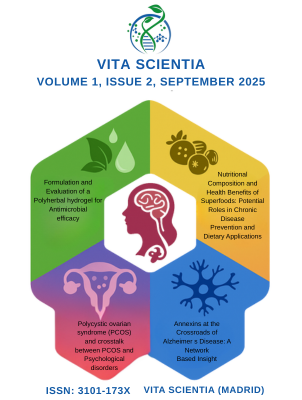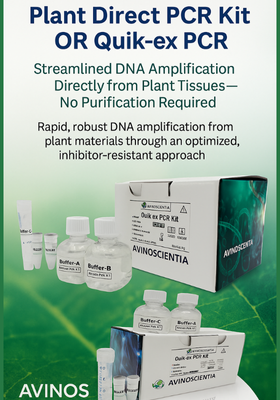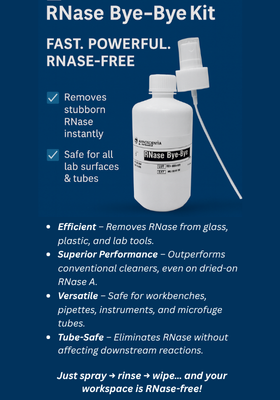Summary
The development of natural and effective treatments for fungal infections remains a key area in dermatological research. This study explores the formulation and evaluation of a polyherbal hydrogel incorporating Moringa oleifera leaf powder and Trigonella foenum-graecum (fenugreek), both recognized for their antimicrobial properties. Using a carbopol-based gel matrix, multiple formulations were developed with varying concentrations of herbal extracts. The hydrogels were evaluated for physicochemical properties, including pH and viscosity. Antimicrobial activity was tested against Streptococcus mutans and Escherichia coli using the agar well diffusion method. All formulations demonstrated antimicrobial effects, with one formulation showing the highest zone of inhibition, likely due to its higher concentration of plant extracts. The findings suggest a synergistic interaction between the herbal constituents, supporting the potential of polyherbal hydrogels as effective topical agents for managing microbial infections.
Graphical Abstract

Keywords
Polyherbal hydrogel, Moringa oleifera, Trigonella foenum-graecum, Agar well diffusion method
Introduction
Three-dimensional, extremely hydrophilic networks of polymers called hydrogels may absorb and hold vast amounts of biological fluids or water. Possessing physical and mechanical properties akin to human extracellular matrices [1]. Their biocompatibility, moisture retention, viscoelasticity, and ease of application make them ideal carriers for topical delivery systems. These networks can be natural, synthetic, or hybrid, and cross-linked chemically or physically. Cross-linking can be tailored to ensure structural integrity and stimuli-responsiveness (to pH, temperature, light, or enzymes), which enables controlled, localized drug release and reduces systemic side effects [2]. The alarming increase in antibiotic resistance and the limitations of synthetic antimicrobials have spurred interest in plant-based alternatives delivered via biocompatible systems like hydrogels, which maintain moisture, offer controlled release, and support wound healing [3]. Moringa oleifera leaf and seed extracts have demonstrated potent antimicrobial and antibiofilm activities against pathogens such as Staphylococcus aureus, including methicillin-resistant strains, via disruption of microbial membranes and inhibition of biofilm formation [4]. Similarly, Trigonella foenum graecum (fenugreek) seeds contain alkaloids, saponins, flavonoids, and coumarins that have demonstrated strong inhibitory effects on a variety of bacteria, including Gram-positive and Gram-negative, including multidrug-resistant S. aureus and E. coli at concentrations between 50–1000 µg/mL, and notably disrupt quorum sensing and biofilm formation [5]. Although several studies have formulated polyherbal gels, such as those combining neem, turmeric, garlic, basil, cinnamon, and tamarind, demonstrating improved antimicrobial efficacy and favorable physicochemical profiles [6]. There is limited investigation into hydrogels comprising Moringa and Fenugreek specifically. One notable study developed a Moringa seed-based hydrogel that exhibited antioxidant, antimicrobial, and wound-healing actions in vivo as well as in vitro excision and incision models [7]. Fenugreek gels have also been evaluated for antimicrobial and anti-inflammatory efficacy against oral pathogens, proving more effective than standard agents like doxycycline in vitro [8].
Building on this foundation, our study aims to formulate and evaluate a polyherbal hydrogel containing Moringa oleifera leaf powder and Trigonella foenum graecum seed extract, investigating its physicochemical characteristics (e.g., pH, viscosity, spread-ability, stability) and in vitro antimicrobial efficacy against clinically relevant pathogens. We ask: Can this dual herb hydrogel exhibit synergistic antimicrobial and antibiofilm properties suitable for topical application in managing skin and wound infections? The answer could pave the way for safe, affordable, plant-based antimicrobial therapies that address antimicrobial resistance and benefit resource-limited healthcare environments.
Results and Discussion
Results
Standardization of Crude Drugs:
Total ash values were found to be 3% for Trigonella foenum-graecum and 10.5% for Moringa oleifera, with acid-insoluble ash values of 1% and 1.5%, respectively. Loss on drying (LOD) was 93.5% for fenugreek and 95% for Moringa. Extractive values showed higher solubility of Moringa in water (8%) and alcohol (10.4%) compared to fenugreek (2.4% and 4.8%).
Phytochemical Screening:
Fenugreek extract tested positive for carbohydrates, alkaloids, proteins, amino acids, tannins, flavonoids, saponins, and glycosides (except glycosides negative in fenugreek by Borntrager’s test). Moringa oleifera extract revealed the existence of carbohydrates, Saponins, flavonoids, and glycosides, but was negative for alkaloids and proteins.
Thin Layer Chromatography (TLC):
TLC analysis revealed that T. foenum-graecum powder and extract revealed respective Rf values of 0.33 and 0.29. while M. oleifera powder and extract exhibited Rf values of 0.73 and 0.71. This indicates the presence of specific polar compounds.
Evaluation of Hydrogel Formulations:
The table 1 summarizes the pH and viscosity measurements of three hydrogel formulations containing extracts of Moringa oleifera and Trigonella foenum-graecum.
Discussion
The standardization results indicate that both Trigonella foenum-graecum (fenugreek) and Moringa oleifera possess significant
inorganic and moisture content, with Moringa displaying higher extractive values, suggesting a richer concentration of soluble
phytoconstituents. Phytochemical screening revealed a wide array of bioactive compounds in both extracts, which are likely
responsible for their observed biological effects. Thin-layer chromatography (TLC) profiles demonstrated consistent Rf values
between powder and extract forms, indicating effective extraction and stability of key chemical constituents. Although not
detailed here, FTIR spectral analysis further supported the chemical integrity of the plant extracts within the formulations
The hydrogel formulations exhibited pH levels slightly on the acidic side, which aligns well with the natural pH of human skin, making them suitable for topical application. Viscosity analysis showed that higher extract concentrations increased the hydrogel's viscosity, potentially enhancing its retention on the skin and thereby improving therapeutic efficacy. While individual plant extracts showed limited antimicrobial activity, the polyherbal hydrogel exhibited a synergistic effect, with noticeable zones of inhibition against Streptococcus mutans and Escherichia coli. This enhanced activity may result from the combined action of diverse phytochemicals on various microbial targets, as well as the hydrogel base facilitating improved delivery and sustained release of the active constituents.
Collectively, these findings suggest that the formulated polyherbal hydrogel not only preserves the key phytochemicals of the individual extracts but also enhances their antimicrobial efficacy. This supports its potential as a promising natural topical antimicrobial agent for managing microbial infections.
Conclusion
The present study successfully formulated and evaluated a polyherbal hydrogel incorporating
| Parameter | Formulation 1 | Formulation 2 | Formulation 3 |
|---|---|---|---|
| pH | 6.00 | 5.90 | 5.88 |
| Viscosity (cP) | 3917.90 | 6422.28 | 8547.47 |
Table 1. Evaluation of pH and Viscosity of Polyherbal Hydrogel FormulationsAll formulations were prepared using standardized ethanolic extracts and evaluated under identical laboratory conditions. cP = centipoise
FTIR Spectroscopic Analysis

Figure 1. FTIR Spectral Analysis of Extracts and Formulation
(A)Moringa oleifera leaf extract showing characteristic functional group peaks.
(B)Trigonella foenum-graecum seed extract showing peaks corresponding to alkanes and nitro compounds.
(C) Hydrogel formulation confirming retention of phytoconstituents.
Antimicrobial Activity:
Antimicrobial activity of polyherbal extracts:
Table 2. Individual plant extracts' antimicrobial capabilities against Escherichia coli and Streptococcus mutans
| Sl. No. | Organism | Sample | 75 µl/ml | 50 µl/ml | 25 µl/ml | 10 µl/ml | 5 µl/ml | Ciprofloxacin (mm) |
|---|---|---|---|---|---|---|---|---|
| 1 | S. mutans | Sample 1 | R | R | R | R | R | 58 |
| 2 | S. mutans | Sample 2 | R | R | R | R | R | 52 |
| 3 | E. coli | Sample 1 | 10 mm | R | R | R | R | 45 |
| 4 | E. coli | Sample 2 | 12 mm | R | R | R | R | 48 |
Footnote: Sample 1 – fenugreek seed extract; Sample 2 – Moringa oleifera leaf extract. R = resistant; Inhibition zone < 8 mm.

Figure 2. Antibacterial Activity of Plant Extracts Against Test Pathogens, (A) Activity against Streptococcus mutans. (B) Activity against Escherichia coli.
Antimicrobial activity of polyherbal hydrogels
Table 3. Polyherbal antimicrobial properties of hydrogel formulation in opposition to Streptococcus mutans and Escherichia coli
| Sl. No. | Organism | 75 µl/ml (mm) | 50 µl/ml | 25 µl/ml | 10 µl/ml | 5 µl/ml | Ciprofloxacin (mm) |
|---|---|---|---|---|---|---|---|
| 1 | S. mutans | 26 | R | R | R | R | 45 |
| 2 | E. coli | 32 | R | R | R | R | 58 |
Footnote: The hydrogel formulation contained both Trigonella foenum-graecum seed extract and Moringa oleifera leaf extract. R = resistant; Inhibition zone < 8 mm.

Figure 3. Antimicrobial Activity of Hydrogel Formulation, (A) Zone of inhibition against Staphylococcus aureus. (B) Zone of inhibition against E. coli.
Herbal Hydrogel Formulations
Table 4. Composition of Moringa oleifera and fenugreek-based herbal hydrogel formulations
| Component | Formulation 1 | Formulation 2 | Formulation 3 |
|---|---|---|---|
| Carbopol 940 (1% w/v) | 0.5 | 1.0 | 1.5 |
| Moringa oleifera extract (1% w/v) | 2.0 | 2.0 | 2.0 |
| Fenugreek extract (1% w/v) | 2.0 | 2.0 | 2.0 |
| Sodium benzoate (1% w/v) | 0.1 | 0.1 | 0.1 |
| Triethanolamine to adjust pH (1N) | q.s. | q.s. | q.s. |
| Distilled water (up to 100 ml) | q.s. | q.s. | q.s. |
Footnote: q.s. = quantum satis; amount sufficient to achieve desired volume or consistency
Trigonella foenum-graecum seed extract and Moringa oleifera leaf extract. Standardization parameters confirmed the quality and identity of the crude drugs. Phytochemical screening revealed the existence of important bioactive substances including carbohydrates, flavonoids, and saponins, which contribute to the therapeutic potential of the formulation. The presence of unique phytoconstituents in both the powder and extract forms was verified by Thin Layer Chromatography (TLC). The prepared hydrogel formulations demonstrated acceptable pH and viscosity profiles, making them suitable for topical application. Importantly, the polyherbal hydrogel showed significant antimicrobial activity against Escherichia coli and Streptococcus mutans.
Suggesting its potential in managing skin infections or oral microbial conditions, these results support further investigation and potential clinical application of the polyherbal hydrogel as a safe and effective natural antimicrobial agent. Future studies should explore its in vivo efficacy and safety in clinical settings, along with its potential for commercialization as a cost-effective natural topical antimicrobial product.
Materials and Methods
Collection and Authentication of Plant Materials
Seeds of Trigonella foenum-graecum L. (fenugreek) and fresh leaves of Moringa oleifera Lam. were collected from Harihara,
Davanagere District, Karnataka, India, during June–July. The plant materials were authenticated by Dr. Aruna Charanthimath,
Head of the Department of Botany, GM Academy First Grade College, Davanagere, Karnataka, and voucher specimens were deposited
in the departmental herbarium for future reference.
Processing of Raw Materials
Fresh Moringa oleifera leaves were washed with clean water, shade dried at ambient temperature away from direct sunlight, and
milled into a coarse powder. T. foenum-graecum seeds were similarly cleaned and shade-dried. All dried plant materials were
stored in airtight, labeled containers at room temperature to prevent degradation of phytoconstituents, in accordance with WHO
guidelines on good herbal processing practices.
Extraction Procedure
Dried powders (50 g) of each plant were extracted using ethanol (95%) for 6 hours in a Soxhlet apparatus. A rotary evaporator
was used to evaporate the solvent at a lower pressure yielding a semi-solid extract. This method was based on standard Soxhlet
extraction techniques with minor modifications.
Ash and acid insoluble ash Value:
Total ash and acid-insoluble ash were determined by incinerating 2 g of dried powder in a muffle furnace (Remi Instruments, India)
at 500 ± 25 °C. Acid-insoluble ash was determined by treating the ash with 2N HCl, filtering, and incinerating the residue [9].
Formula to calculate % of ash and acid insoluble ash value is as follow
Ash value(%)=(Weight of ash)/(Weight of sample)×100
Acid insoluble value(%)=(Weight of residue)/(Weight of sample)×100
Loss on Drying (LOD)
Approximately 2 g of the material was dried for 4 hours at 105°C in a hot air oven to calculate the LOD. The difference in weight
before and after drying was used to calculate the moisture content [10]. In this process, W1 refers to the weight of the empty
dish, although W2 indicates the dish's weight and the residue's weight upon drying. Extractive Value(%)=(W2-W1)/(Weight of drug
taken)×100
Extractive Value
Alcohol and water-soluble extractives were determined by macerating 5 g of powder with 100 mL of solvent for 24 h. To calculate
extractive values, a 25 mL aliquot was dried by evaporation, and the residue was weighed [11]. The weight of the empty dish is
denoted as W1, while W2 represents the weight of the dish along with the residue. Extracive Value(%)=(W2-W1)/(Weight of drug taken)×100
Preliminary Phytochemical Screening
Standard testing for phytochemicals was conducted on the ethanol extracts for the presence of alkaloids, tannins, flavonoids,
glycosides, carbohydrates, proteins, and saponins [12].
Thin Layer Chromatography (TLC)
TLC was used to examine the phytochemical components of the plant extracts using pre-coated silica gel GF254 plates. Mobile phase systems
were selected based on the polarity and solubility of the compounds present in the extracts. Two solvent systems were employed: ethyl
acetate: acetic acid: formic acid: water (10:5.5:5.5:13, v/v/v/v) and toluene: ethyl acetate: formic acid (5:4:1, v/v/v). Sample
solutions were applied manually as discrete spots or bands using fine capillary tubes. The TLC plates were developed in a pre-saturated
chamber lined with filter paper to ensure solvent saturation and consistent migration of the compounds. To identify fluorescent or
UV-active components, the plates were air-dried after growth and examined under UV light at 254 and 366 nm. For enhanced visualization
of separated compounds, the plates were post-treated with vanillin–sulfuric acid reagent and heated at 110°C to induce color
development, aiding in compound differentiation [13]. RF is a number that is given as a decimal fraction and describes how a single
compound behaves in TLC.
Rf=(Distance of center of spot from starting point)/(Distance of solvent front from starting point) 4.10. Evaluation of Herbal Hydrogel
pH
The pH of each formulation was determined using a digital pH meter (Eutech Instruments, Singapore). A 1% w/v dispersion of the
hydrogel in distilled water was prepared, and the pH was recorded at room temperature. Formulations within the pH range of
5.5–6.5 were considered suitable for topical application
Viscosity Measurement
Viscosity of the hydrogel formulations was assessed using a Brookfield Viscometer Spindle No. 4, at 60 rpm. Approximately 50 g of
each gel sample was placed in a 100 mL beaker, ensuring that it was levelled correctly. The spindle was immersed in the gel without
touching the container’s bottom, and viscosity was recorded after achieving a steady reading.
Fourier Transform Infrared Spectroscopy (FTIR)
FTIR spectra were recorded using an ATR-based Alpha Bruker FTIR spectrometer. Samples were scanned in the 4000–400 cm⁻¹ range to
identify functional groups
Antimicrobial Assay
The antimicrobial activity of extracts and hydrogels was evaluated by the agar well diffusion method against Escherichia coli and
Streptococcus mutans. Brain Heart Infusion Agar was used. The wells were loaded with 5–75 µL of test solution. Ciprofloxacin
(5 µg/disc) served as a positive control. The zone of inhibition was measured after 24 hours of incubation at 37 °C [14].
Acknowledgement
We thank Dr. Girish Bolakatti, Principal of GM Institute of Pharmaceutical Sciences and Research for his valuable guidance and support throughout the study. Gratitude is extended to the Department of Microbiology, Maratha Mandal College, Belgaum, and GM Institute of Pharmaceutical Sciences and Research, Davangere for providing facilities for antimicrobial studies. We also acknowledge our colleagues and staff for their technical assistance.
Author contribution
Conceptualization and experimental work: Rakesh S. A.
Manuscript writing: Anusha B. N.
Data analysis and interpretation (Results and Discussion): Prathiksha C. C.
Supervision and overall guidance: Dr. Ramesh C and Mohammed Yosuf Malik Damani
Conflicts of Interest
The authors declare no conflicts of interest.
References
- Fu X, Zheng L, Wen X, et al. Functional hydrogel dressings for wound management: a comprehensive review. Mater Res Express. 2023; 10:112001. doi:10.1088/2053-1591/acfb5c.
- Jia B, Li G, Cao E, et al. Recent progress of antibacterial hydrogels in wound dressings. Mater Today Bio. 2023; 19:100582. doi:10.1016/j.mtbio.2023.100582.
- Saher T, Manzoor R, Abbas K, et al. Analgesic and anti-inflammatory properties of two hydrogel formulations comprising polyherbal extract. J Pain Res. 2022; 15:1203-19. doi:10.2147/JPR.S351921.
- Menon L, Chouhan O, Walke R, et al. Disruption of Staphylococcus aureus biofilms with purified Moringa oleifera leaf extract protein. Protein Pept Lett. 2023; 30:116-25. doi:10.2174/0929866530666230123113007.
- Alenazy R. Antimicrobial activities and biofilm inhibition properties of Trigonella foenum-graecum methanol extracts against multidrug-resistant Staphylococcus aureus and Escherichia coli. Life (Basel). 2023; 13:703. doi:10.3390/life13030703.
- Bhinge SD, Bhutkar MA, Randive DS, et al. Formulation development and evaluation of antimicrobial polyherbal gel. Ann Pharm Fr. 2017; 75:349-58. doi:10.1016/j.pharma.2017.04.006.
- Ali A, Garg P, Goyal R, et al. A novel herbal hydrogel formulation of Moringa oleifera for wound healing. Plants (Basel). 2021; 10:25. doi:10.3390/plants10010025.
- Sindhusha VB, Rajasekar A. Preparation and evaluation of antimicrobial property and anti-inflammatory activity of fenugreek gel against oral microbes: an in vitro study. Cureus. 2023; 15:e47659. doi:10.7759/cureus.47659.
- Manikandaselvi S, Vadivel V, Brindha P. Studies on physicochemical and nutritional properties of aerial parts of Cassia occidentalis L. J Food Drug Anal. 2016; 24:508-15. doi:10.1016/j.jfda.2016.02.003.
- Ahn JY, Kil DY, Kong C, et al. Comparison of oven-drying methods for determination of moisture content in feed ingredients. Asian-Australas J Anim Sci. 2014; 27:1615-20. doi:10.5713/ajas.2014.14305.
- Simran Singh P, Bal M, Mukhtar HM, et al. Standardization and pharmacological investigation on leaves of Ficus bengalensis. Int J Res Pharm Chem. 2011; 1(3).
- Pant DR, Pant ND, Saru DB, et al. Phytochemical screening and study of antioxidant, antimicrobial, antidiabetic, anti-inflammatory and analgesic activities of extracts from stem wood of Pterocarpus marsupium Roxburgh. J Intercult Ethnopharmacol. 2017; 6:170-6. doi:10.5455/jice.20170403094055.
- Danciu V, Hosu A, Cimpoiu C. Thin-layer chromatography in spices analysis. J Liq Chromatogr Relat Technol. 2018; 41:282-300. doi:10.1080/10826076.2018.1447895.
- Mehdipour A, Ehsani A, Samadi N, et al. The antimicrobial and antibiofilm effects of three herbal extracts on Streptococcus mutans compared with chlorhexidine 0.2% (in vitro study). J Med Life. 2022; 15:526-34. doi:10.25122/jml-2021-0189.



